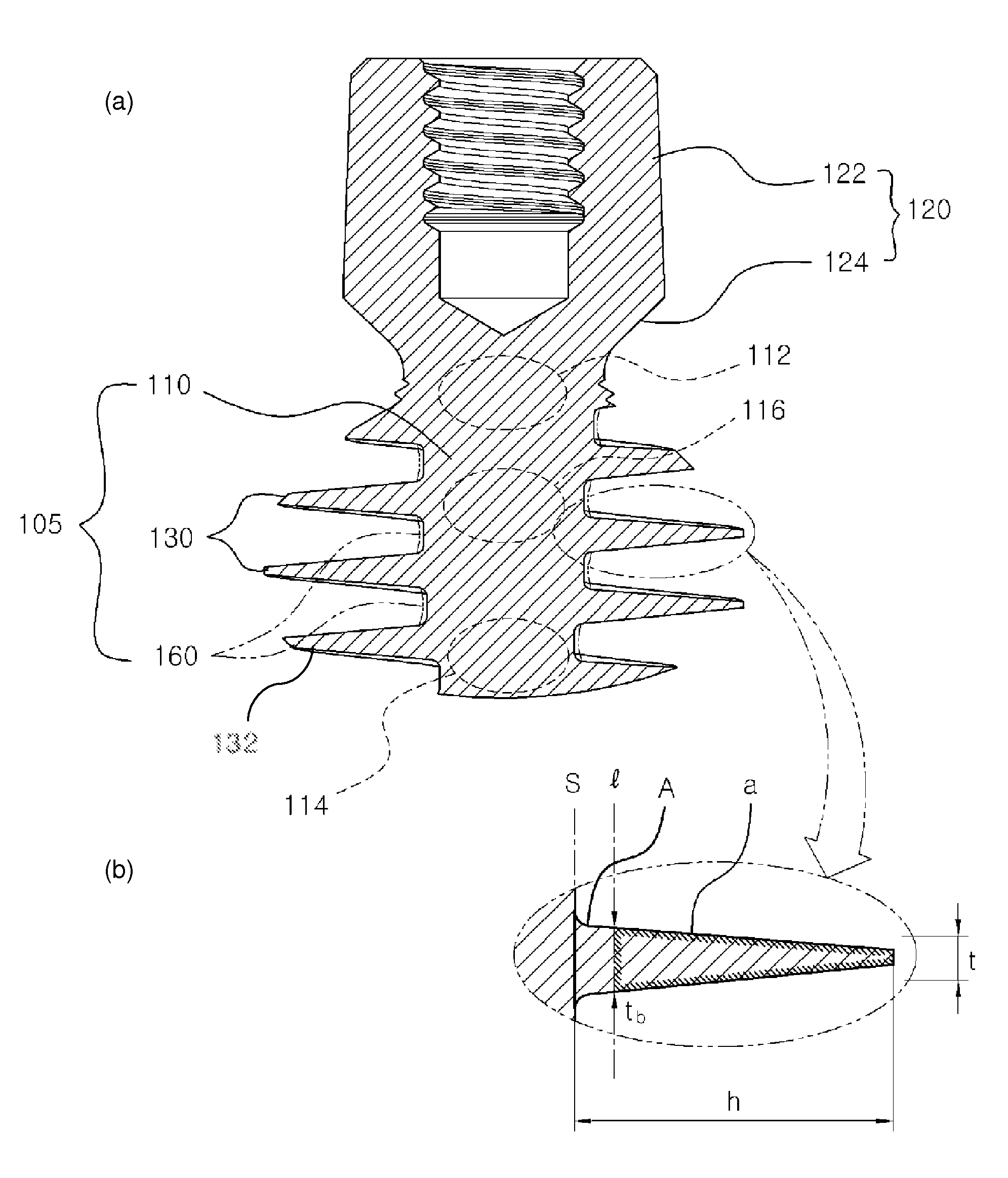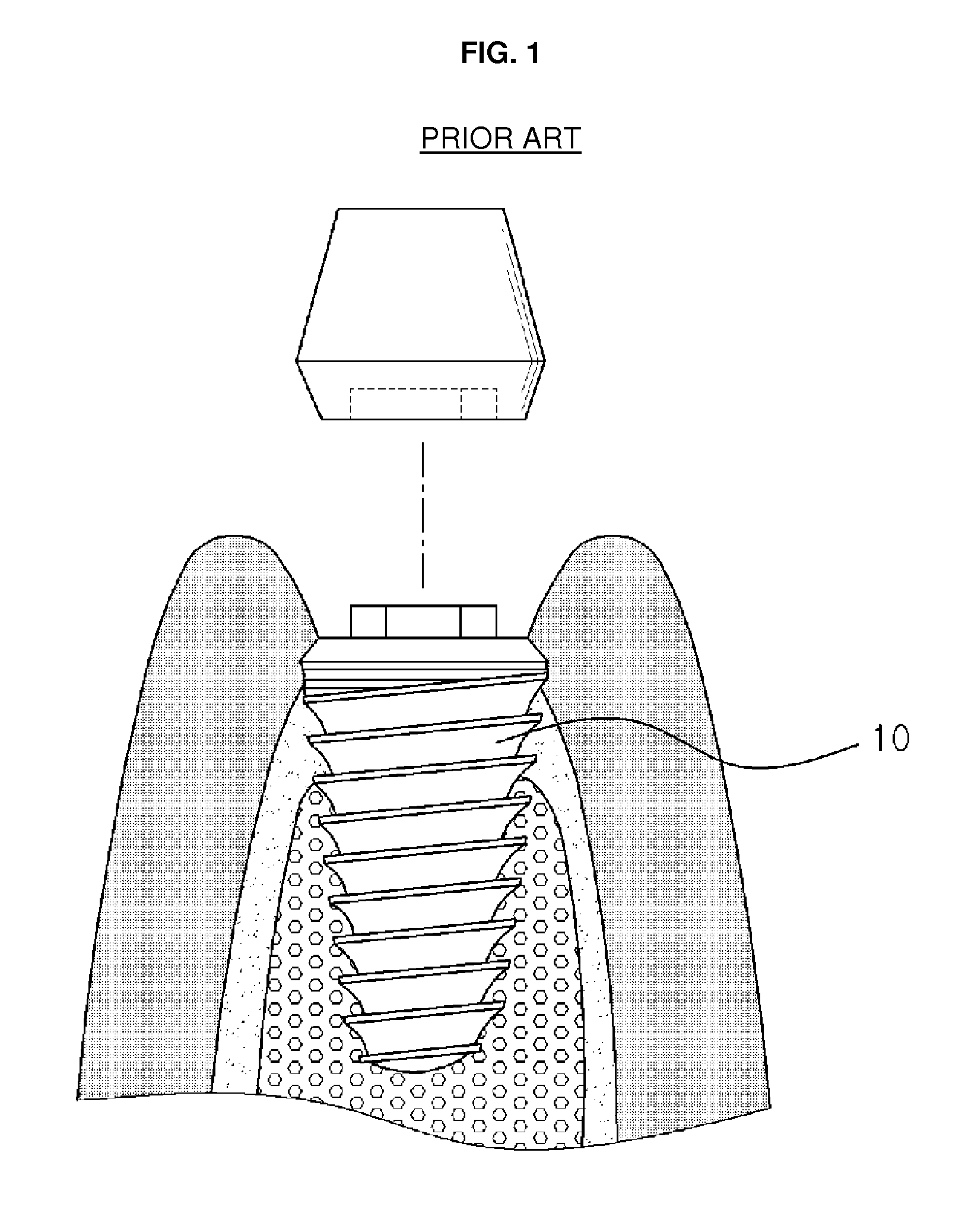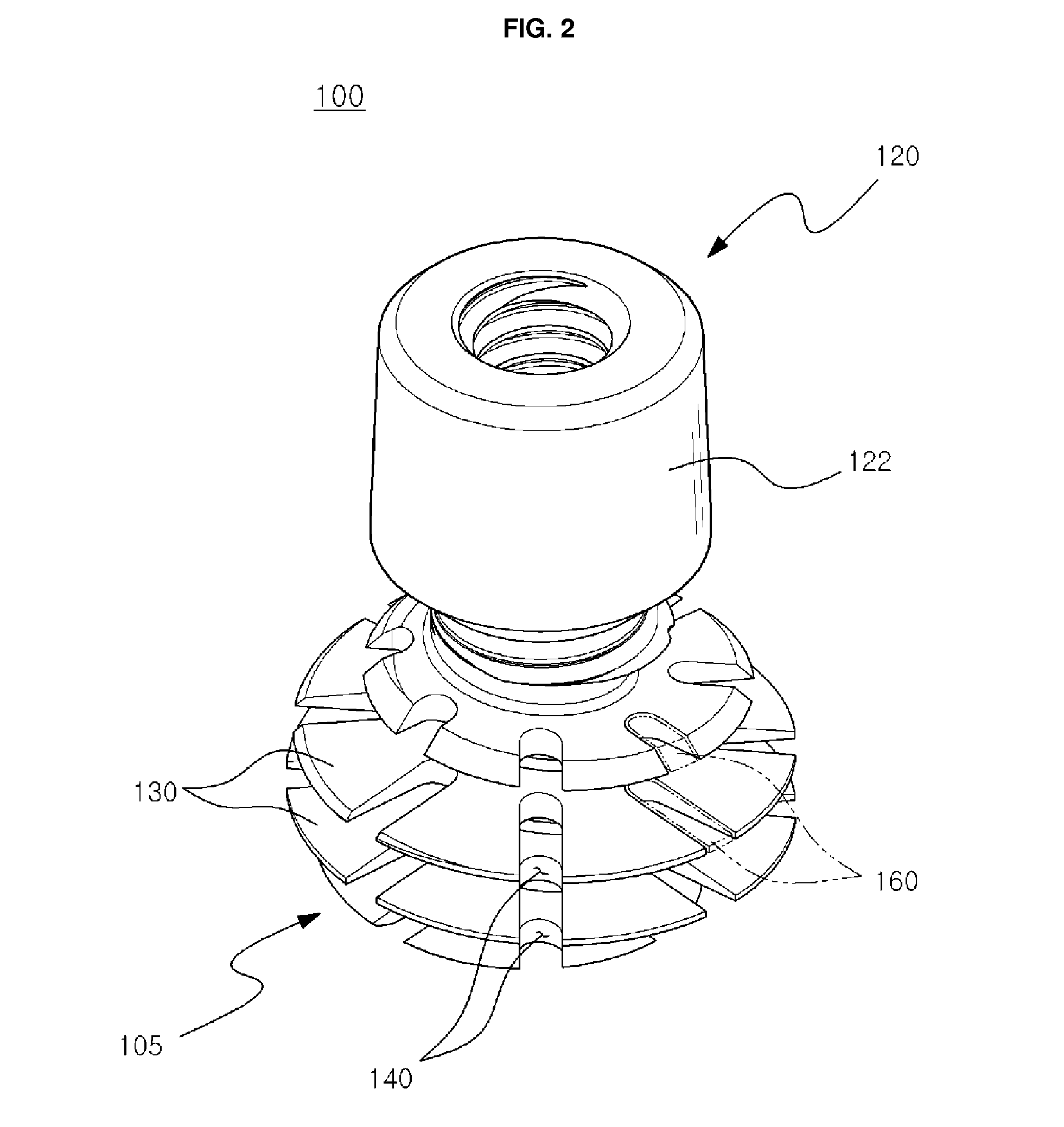Dental implant
a technology of dental implants and implants, applied in dental implants, dental surgery, medical science, etc., can solve the problems of short or significant thin length of available alveolar bone, failure of osseointegration, and inability to fully integrate, and achieve the effect of prolonging the li
- Summary
- Abstract
- Description
- Claims
- Application Information
AI Technical Summary
Benefits of technology
Problems solved by technology
Method used
Image
Examples
Embodiment Construction
[0051]Reference will now be made in detail to embodiments of the present invention, examples of which are illustrated in the accompanying drawings, wherein like reference numerals refer to the like elements throughout. The embodiments are described below in order to explain the present invention by referring to the figures.
[0052]FIG. 2 is a perspective view illustrating an implant 100 according to an embodiment of the present invention, FIG. 3 is a sectional view illustrating the implant 100 of FIG. 2, and FIG. 4, parts (a) and (b), illustrate sectional views to compare a usage example of the implant 100 of FIG. 2 and the conventional art.
[0053]Referring to FIG. 2 through FIG. 4, the implant 100 for a dental operation according to an embodiment of the present invention comprises a body portion 105 and a mounting portion 120. The body portion 105 and the mounting portion 120 are integrally formed with each other and may be formed using a bioaffinity material such as titanium, zirconi...
PUM
 Login to View More
Login to View More Abstract
Description
Claims
Application Information
 Login to View More
Login to View More - R&D
- Intellectual Property
- Life Sciences
- Materials
- Tech Scout
- Unparalleled Data Quality
- Higher Quality Content
- 60% Fewer Hallucinations
Browse by: Latest US Patents, China's latest patents, Technical Efficacy Thesaurus, Application Domain, Technology Topic, Popular Technical Reports.
© 2025 PatSnap. All rights reserved.Legal|Privacy policy|Modern Slavery Act Transparency Statement|Sitemap|About US| Contact US: help@patsnap.com



